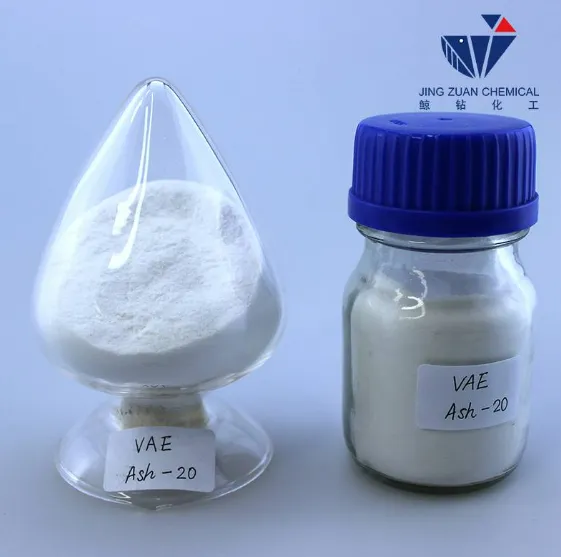
ජුනි . 19, 2025 15:06 ලැයිස්තුවට ආපසු
Redispersible Powder's Role in Enhancing Durability of Construction Products
In the construction industry, durability is a cornerstone of quality. Products that withstand environmental stressors, mechanical loads, and time ensure the longevity of structures while reducing maintenance costs. Among the advanced materials driving this durability revolution is redispersible powder (RDP), a versatile additive that enhances the performance of construction materials. This article explores how redispersible polymer powder transforms tile adhesives, mortars, and other building products, ensuring superior strength, flexibility, and resistance.

Understanding Redispersible Polymer Powder in Modern Construction
Redispersible polymer powder is a free-flowing, white powder obtained by spray-drying polymer emulsions. When mixed with water, it re-emulsifies, forming a flexible film that binds materials like cement, sand, and additives. This unique property improves cohesion, adhesion, and workability in dry-mix formulations.
In construction, RDP acts as a binding agent that bridges gaps between rigid components. For example, in cement-based mortars, it enhances tensile strength and reduces cracking caused by shrinkage. Its water-retention properties ensure proper hydration of cement, which is critical for achieving optimal mechanical performance. Manufacturers rely on redispersible powder to produce lightweight, durable products that meet stringent industry standards.
RDP for Tile Adhesive: Strengthening Bonding Performance
Tile adhesives are a critical application area for redispersible polymer powder. Traditional cement-based adhesives often struggle with flexibility and adhesion, leading to tile detachment or cracking under stress. By incorporating RDP for tile adhesive, manufacturers create formulations that excel in both wetting and bonding.
When RDP is added to tile adhesives, it improves open time—the period during which tiles can be adjusted after application. This is especially vital for large-format tiles, where precise alignment is crucial. The polymer film formed by tile bonding redispersible powder ensures a strong, elastic bond that accommodates substrate movement due to temperature changes or moisture fluctuations. Additionally, RDP enhances resistance to water penetration, preventing degradation in wet areas like bathrooms and kitchens.
For high-traffic or exterior applications, redispersible powder boosts impact resistance, ensuring tiles remain intact even under heavy loads. This makes RDP-modified adhesives a preferred choice for commercial and residential projects requiring long-term reliability.
Beyond Tile Adhesives: Versatility of Redispersible Polymer Powder
While RDP for tile adhesive is a prominent use case, the versatility of redispersible polymer powder extends to other construction materials. For instance:
-
Self-leveling compounds: RDP improves flowability and reduces cracking in floor underlayments.
-
Exterior insulation systems: It enhances the adhesion of renderings and plasters to insulation boards.
-
Repair mortars: RDP increases bond strength and durability in concrete repair applications.
-
wall putty: improve the anti-cracking ability
The adaptability of redispersible polymer powder underscores its role as a universal enhancer, ensuring construction materials perform reliably across diverse conditions.
FAQs About Redispersible Powder in Construction Applications
How does redispersible polymer powder improve tile adhesive durability?
Redispersible powder forms a flexible polymer network within the adhesive matrix, enhancing bond strength, flexibility, and water resistance. This prevents tile detachment and cracking, even in dynamic environments.
Can RDP for tile adhesive be used in outdoor projects?
Yes. Tile bonding redispersible powder is formulated to withstand UV exposure, temperature fluctuations, and moisture, making it ideal for outdoor applications like patios or façades.
What is the shelf life of redispersible polymer powder?
When stored in a cool, dry environment, redispersible powder typically retains its properties for up to 12 months. Proper packaging ensures protection against humidity and clumping.
Does redispersible powder affect the mixing process of mortars?
No. RDP integrates seamlessly into dry mixes and re-emulsifies upon water addition, ensuring consistent workability without complicating the mixing process.
Is redispersible polymer powder environmentally friendly?
Many RDP products are formulated with low VOC content and comply with international sustainability standards, aligning with green building practices.
Redispersible polymer powder has revolutionized the construction sector by addressing critical challenges in material durability. From RDP for tile adhesive to exterior coatings, its ability to enhance adhesion, flexibility, and resistance ensures structures remain resilient for decades. As manufacturers continue to innovate, the role of redispersible powder will expand, solidifying its status as an indispensable component in modern construction. By prioritizing quality and performance, industry leaders can deliver products that meet the evolving demands of builders and architects worldwide.
-
Versatile Hpmc Uses in Different Industries
පුවත්Jun.19,2025
-
Redispersible Powder's Role in Enhancing Durability of Construction Products
පුවත්Jun.19,2025
-
Hydroxyethyl Cellulose Applications Driving Green Industrial Processes
පුවත්Jun.19,2025
-
Exploring Different Redispersible Polymer Powder
පුවත්Jun.19,2025
-
Choosing the Right Mortar Bonding Agent
පුවත්Jun.19,2025
-
Applications and Significance of China Hpmc in Modern Industries
පුවත්Jun.19,2025







